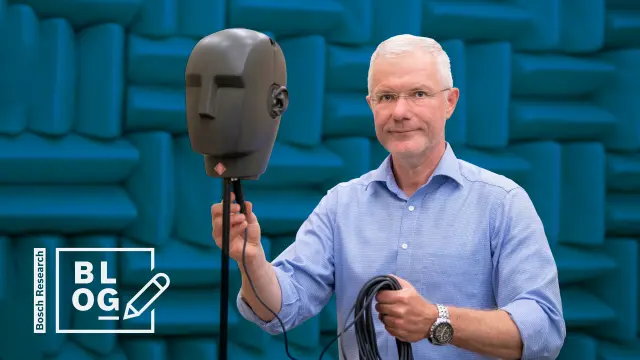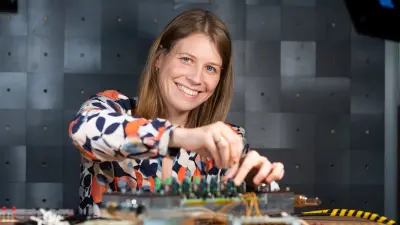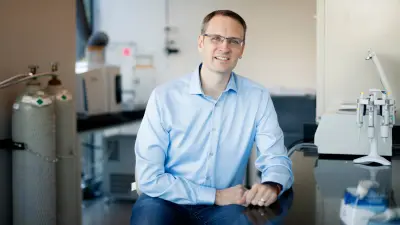Dr. André Gerlach
Senior Expert Technical Acoustics and Ultrasound
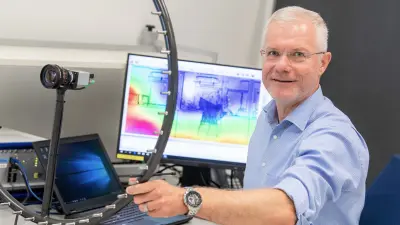
My work and research focus on the acoustics of our products.. With some products, I would like to improve the acoustics; with others, we utilize sound directly for their functionality. I continuously develop the methods for this. In my work, I employ numerical simulations and artificial intelligence techniques. Additionally, I can characterize and visualize the acoustics through measurements in our sound measurement rooms. For this I use microphones, acoustic cameras, laser scanning and artificial heads.
Please tell us what fascinates you most about research.
My interest in new findings and in solving previously unsolved problems was piqued during my university studies and particularly during my work as a research assistant at the University of Stuttgart. Several professors of acoustics were my role models; they spurred me on and supported me. Even before my time as an associate, I visited Bosch Research and saw how new findings lead to innovative products in applied research. I wanted to be a part of that.
What makes research done at Bosch so special?
Bosch has many different and innovative products. Developing them is complex and demands vast basic knowledge as well as excellent engineering skills. Therefore, we work in interdisciplinary teams. I enjoy this. I also find it very important that we promote young, talented students in research. I very much enjoy being involved in this personally. That's why I supervise several bachelor and master's theses every year. I also have a teaching mandate in acoustics. In my lectures, I train students for practical application in industry.
What research topics are you currently working on at Bosch?
One current focus of my research work is automated driving. I would like to use ultrasound (high-frequency sound) to observe the vehicles or robots’ environment and detect other objects. Nature is my role model. For example, bats are very efficient in detecting objects and highlight the potential that exists. I am currently improving the technology’s efficiency by using artificial intelligence methods for this.
What are the biggest scientific challenges in your field of research?
Acoustics is an interdisciplinary science. It starts with the generation of sound, continues with sound propagation, and ends with human perception. Difficult-to-model effects play an important role in sound generation. Propagation can cover vast, sound-influencing areas. The perception of sounds by humans is complex. Frequently it is determined using auditory experiments; however, it is not yet completely mappable by means of a model. For a good product, we always need to go to the human stage- that is the challenge.
How do the results of your research become part of solutions "Invented for life"?
In my work, I distinguish between two product groups. In the first, sound contributes directly to the function. For example, I am working on our sound systems for the vehicle interior and on the ultrasound systems for the exterior observation of vehicles. In the second group, the focus is on shaping acoustics or reducing the sound. Here I am contributing to our electromobility drive systems. So I can truly say: Acoustics is aimed at human perception or support and is therefore genuinely ‘invented for life’.
Curriculum vitae
Since 2007
Teaching mandate in Technical Acoustics, Lectures at the University of Stuttgart and the Baden-Wuerttemberg Cooperative State University Stuttgart
1995-2000
Ph.D. in Engineering / Method for predicting sound power, University of Stuttgart
1989-1994
Information Technology degree, specialization in Acoustics, Technische Universität Dresden
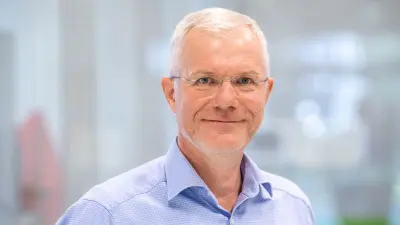
Selected publications

Eisele et al. (2023)
- J. Eisele, A. Gerlach, M. Maeder, S. Marburg
- The Journal of the Acoustical Society of America JASA, 2023

Gerlach et al. (2020)
- A. Gerlach, M. Liebler, G.M. Sessler, H. v. Seggern, B. Scheufele, E. Hirth
- Journal AIP Advances 10, 095313 (2020)

Liebler et al. (2020)
- M. Liebler, Ch. Kling, A. Gerlach, Ch. Koch
- The Journal of the Acoustical Society of America JASA, 2020

Henneberg et al. (2020)
- J. Henneberg, J. S. Gomez Nieto, K. Sepahvand, A. Gerlach, H. Cebulla, S. Marburg
- Journal of Applied Acoustics, Volume 157, 107026
Get in touch with me
Dr. André Gerlach
Senior Expert Technical Acoustics and Ultrasound
